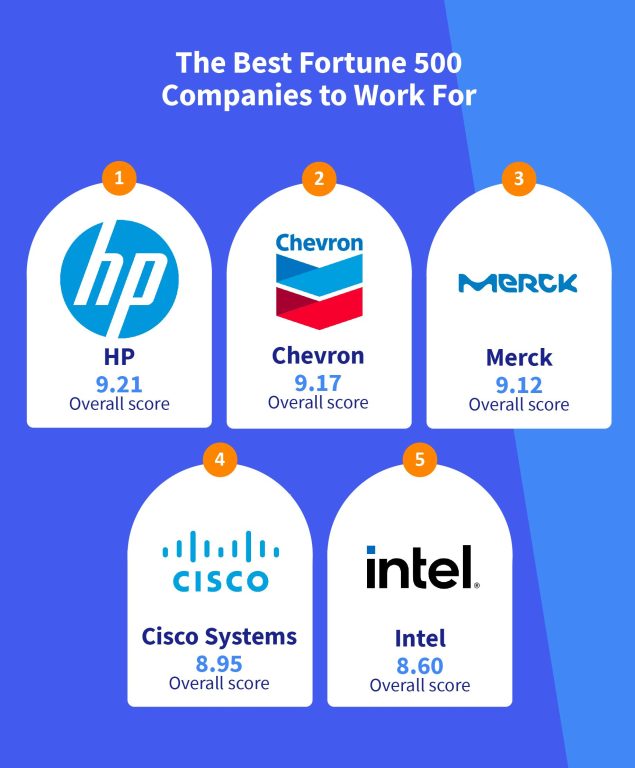The reality of working in the Global Fortune 500
HP is the best place to work, according to Lensa.
Why You Should Care
Being on the Global Fortune 500 list equals business success.
But are these good employers? Lensa investigates.
Find out if there is a link between high pay and good employee experience.
The Global Fortune 500 list has become synonymous with business success. The list is based on a range of economic and financial factors, including sales growth, assets, earnings, and capitalization.
But just because these are some of the best-performing companies in the world, doesn’t mean they are necessarily great places to work. In this context, Lensa decided to explore the pros and cons of working at the world’s largest biggest companies.
HP, which is ranked 182 globally by Fortune, was chosen by Lensa as the best employer with an overall score of 9.1. Its median salary was $92,900 – it has the smallest wage gap between the CEO and employees, but its CEO Enrique Lores still earns 134 times more than the average employee. The tech company also had a 4.2-star employee rating on Glassdoor.
Second place for Lensa was energy company Chevron with a score of 9.17 – it is ranked 75 by Fortune. Average salaries at Chevron were $107,000 – this is the third-highest on the list (after Cisco and Microsoft) but the CEO earns 165 times as much. Chevron’s employee rating on Glassdoor is 4.1.
Cisco, with its average salary of $110,000 (the second highest after Microsoft’s $120,000), came in at number four (it is Fortune 221) with a score of 8.95 after German pharma giant the Merck group. Cisco had the joint highest employee rating (4.4) with Microsoft. Cisco’s CEO earns 231 times more than the average employee.

Credit: Lensa.
Microsoft was eighth (it is Fortune 33) – its CEO Satya Nadella earns 415 times more than the average employee. Microsoft has embraced the hybrid future of work and was given an overall score of 7.85.
Companies that ranked at the bottom of Lensa’s 50 best companies to work for included Lockheed Martin, Honeywell International, and Wells Fargo.
Wells Fargo (Fortune 103) was ranked at 50 with a score of 3.77. Although it offers remote working options, its average salary was $52,600 and its CEO earned 387 times more than that.
The link between pay and employee expectations
Overall, Fortune 500 companies pay their staff well – although they pay their CEOs much, much better. This begs the question is there a link between high pay and how positively employees view their workplace?
Microsoft and Cisco, which were the highest rated employers, were also the two highest-paying companies. While the low pay employers, like Wells Fargo and Marathon Petroleum (42), had low employee ratings of 3.6 and 3.7 respectively.
However, it is clear that pay isn’t always a determinant of employee satisfaction, given that Exxon Mobil (Fortune 23, Lensa 44) pays $101,000 (its CEO Darren Woods gets paid 162.62 times more) but its employee rating is 3.5, among the lowest in the list.
This suggests that to build a good employee experience employers need to think beyond pay and look towards improving their perks and benefits.
Do you offer competitive maternity and paternity leave? Do you support your employees with their mental and physical wellbeing? Do you ensure they have a good work-life balance? Do you provide them with flexible working options and listen to what they need around that?
All of those things make a good employer, and ensure that companies in the Global Fortune 500, and beyond, can continue to attract and retain top talent in the ongoing war for talent.
Sign up to the UNLEASH Newsletter
Get the Editor’s picks of the week delivered straight to your inbox!

Chief Reporter
Allie is an award-winning business journalist and can be reached at alexandra@unleash.ai.
